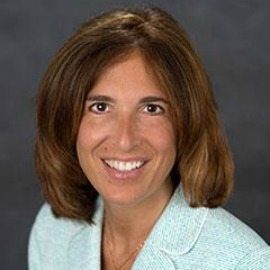
This three-part series features new Thomas Jefferson High School for Science and Technology Principal Dr. Ann Bonitatibus. She will be the keynote speaker for the fifth annual 2018 K-12 STEM Symposium on April 14 at the Nysmith School, in Herndon, Virginia.
Thomas Jefferson High School recently underwent a renovation that included upgrades to its classrooms and labs with modern equipment. Now, the school is looking to give back to the community, said Principal Ann Bonitatibus, who will speak at the K-12 STEM Symposium on April 14.
Thomas Jefferson has long seen itself as a school that wants to give back, Bonitatibus said, so much so it has informally adopted the mantra of “For those to whom much has been given, much is expected.”
“Whether it is through the mentorships in the business community, the knowledge sharing that has occurred, the parental support, the donations that have made our labs possible — we feel a strong urge to give back to those who may not have the same resources or the same networks to explore STEM,” she said.
Registration for the STEM Symposium is ongoing. The all-day event is expected to draw more than 4,000 students, parents, educators, and executives from the corporate, government, academic and nonprofit sectors. There will also be more than 50 exhibitors and at least 20 student showcases.
Bonitatibus’ participation in the event is just one way the school looks to reach outside its own walls.
“We continue to have many different STEM-bassador programs where our students are reaching out to other elementary schools or middle schools, and they are mentors,” she said. “They help tutor. They help plan events. We have students who create nonprofits with the sole purpose of community outreach. The TJ Partnership Fund is an organization that played a critical role in the capital campaign that enhanced resources at our school’s campus during an extension renovation. With the close of that campaign, they are shifting their emphasis to community STEM outreach, particularly to schools who serve underrepresented groups.”
Bonitatibus said she believes in making room for students to pursue their passions through joyful learning.
“When people ask how TJ is different from other schools, there are two key features,” she said. “First, this is a true community of learners. Students love coming here, not so much because of what happens within the four walls of the classroom, but through the exchange of knowledge and ideas amongst all of their peers and the teachers. What’s really remarkable at TJ is that when I ask teachers what they like most about TJ, they say the students push them to be better. This is reflective of the culture that is here. There is a thirst for knowledge that is really unquenchable for both the students and the staff.
“Second, you can walk through our school and see flexible learning happening anytime, anywhere. Traditional high schools are more likely driven by a bell with learning contained to an individual teacher’s classroom. At TJ, one sees students collaborating throughout the day; at lunchtime, in between classes, before school and after school. Also, one will see teachers collaborating to improve their practice and immediately respond to student needs.
“During the renovation, open commons areas were built, and that was a really intelligent design for TJ. You can see three classes and three teachers — all in a common area, very fluid. You almost have to look for the teachers because a lot of the learning is student-directed and collaborative in nature. Teachers are there truly as facilitators. I believe these are just some of the things that make TJ really unique and special and probably the closest that I’ve seen to the ideal that we would want for high schools in public education today.”
Finally, Bonitatibus said educators need to ask how to improve equity for those who have fewer resources.
“Where is our responsibility in addressing what really should be called an ‘opportunity gap?’” she said. “We are trying to constantly fill and account for so many different variables that it can be daunting. One of the most impactful things that we can do as educators goes back to just the basic principle of forming positive and healthy relationships.
“So many times, our students just want to know that someone cares about them, that someone understands them. That doesn’t mean we have to cross professional boundaries such as ‘friending’ students on social media pages and get caught into some of those traps. Rather, it’s the friendly smile, the simple question of ‘How was your weekend?’ or ‘Tell me about yourself,’ and students just want that connection. That, in and of itself, can bridge so many gaps and foster connections that eliminate inequities.”

